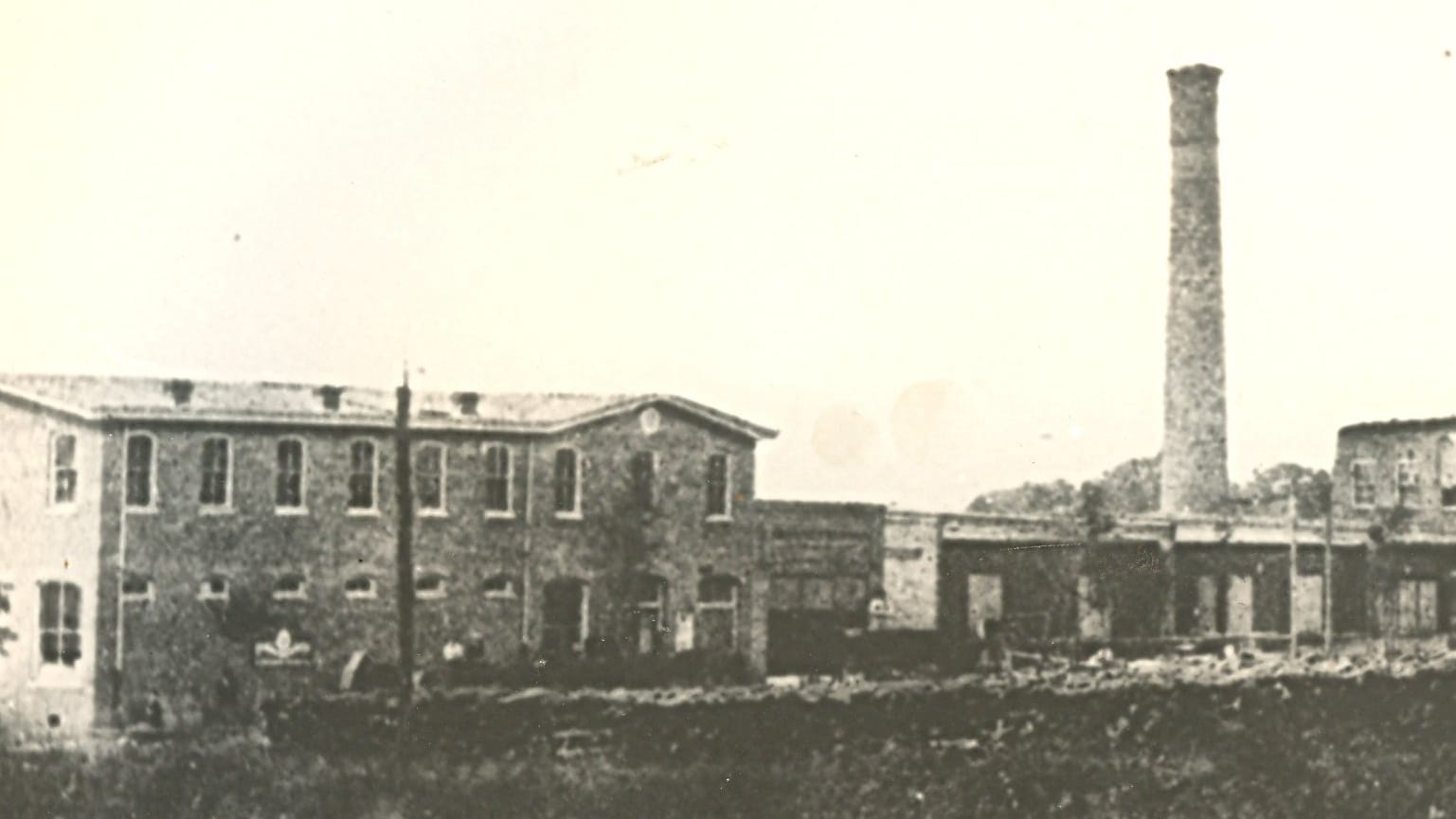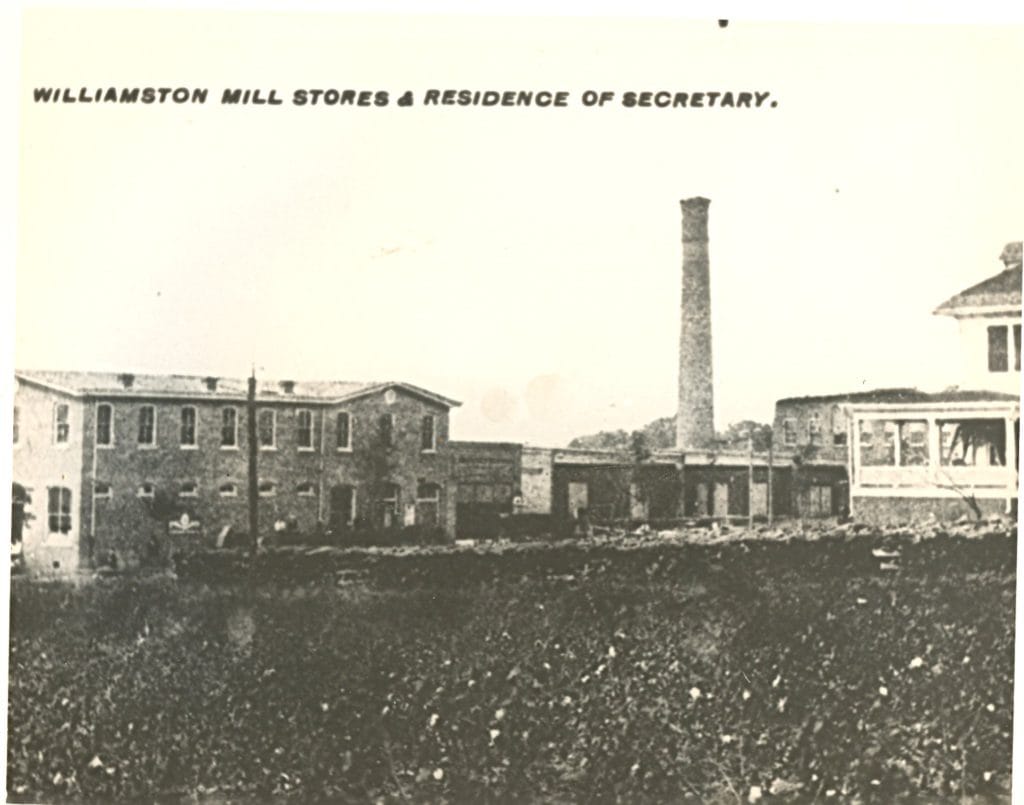If you read The Textile Impact exhibit opens at Anderson Arts Center on Dec. 8, you know that the Anderson County Museum is partnering with the Anderson Arts Center for a textile display, situated comfortably at the intersection of fiber art and local history.
We hope you enjoy this preview of the exhibit and its exploration of how our local textile identity developed.
Anderson County first came into existence in 1826, following a statute passed down by the South Carolina General Assembly. A mere decade later, in 1836, the Pendleton Manufacturing Company would be chartered as the first textile mill in the county. Its two-story brick building housed yarn production machinery that had traversed the eastern United States from Patterson, NJ to Charleston, then up to Hamburg (near modern day Augusta, GA) before arriving at its home by Three and Twenty Creek.
It was a typical arrangement in the South for area farmers to bring raw material to a central mill location for processing. In the case of grains, the farmer might leave with flour or corn meal, while the Pendleton Manufacturing Company created thread or yarn from cotton and wool.
The mill departed from the normal arrangement by virtue of its reach. Materials made in Anderson County were being sold in regularity to larger markets down river and eventually by rail, allowing the Pendleton Manufacturing Company to continue operating as a spinning mill into the 1910s.
It would seem that Anderson County, then, was destined from the start to be a textile driven entity. Throughout this exhibit at the Anderson County Museum, we will be unfolding the fabric of this county’s textile history in an effort to answer three key questions:
- Was this area naturally prepped for a successful textile economy and what were its disadvantages?
- Which historic events or actors initiated the textile rise seen in the early twentieth century?
- How did textile workers interact with the industry and what may have led to the eventual decline of local mills?
Anderson’s textile industry defined its history for more than a century. The lives of Andersonians almost inevitably intersected with cotton production or processing and many of the mill sites are still present in the landscape.
Manufacturing competition from abroad caused the industry to give way, allowing for a period of diversification. Such a past of growth and change, triumph and struggle, established the modern identity evident in the county’s land and people.
Don’t miss the Textile Impact Exhibit at the Anderson Arts Center for your chance to learn about our county’s past and view artwork from an array of talented contributors. The Arts Center is located at 110 Federal Street in downtown Anderson, SC.
Running December 8th – January 28th, the Textile Impact Exhibit will also include an opening reception at the Arts Center on December 11th from 6:30-8:30 pm. Be sure to visit the Anderson County Museum as well for more on Anderson’s textile history and other exhibits which explore our area’s past.
Want to visit?
Anderson County Museum, 202 E. Greenville Street. Anderson, SC 29621
Gallery Hours: Tuesday 10am-7pm; Wednesday – Saturday 10am-4pm
For more information, call (864) 260-4737 or visit the museum’s website at andersoncountymuseum.org.
About the Author

Curator of the Anderson County Museum since the summer of 2015, Dustin Norris holds a Master of Arts in History. His academic interest has always centered on Southern and Appalachian history, especially as it is represented in popular culture. His work at the museum allows Dustin to bring stories of Anderson County’s past to the residents of the present in an effort to preserve history, engage the community, and promote a culture of learning. In his time away from work, Dustin enjoys playing bluegrass and old time music or spending time outdoors.








